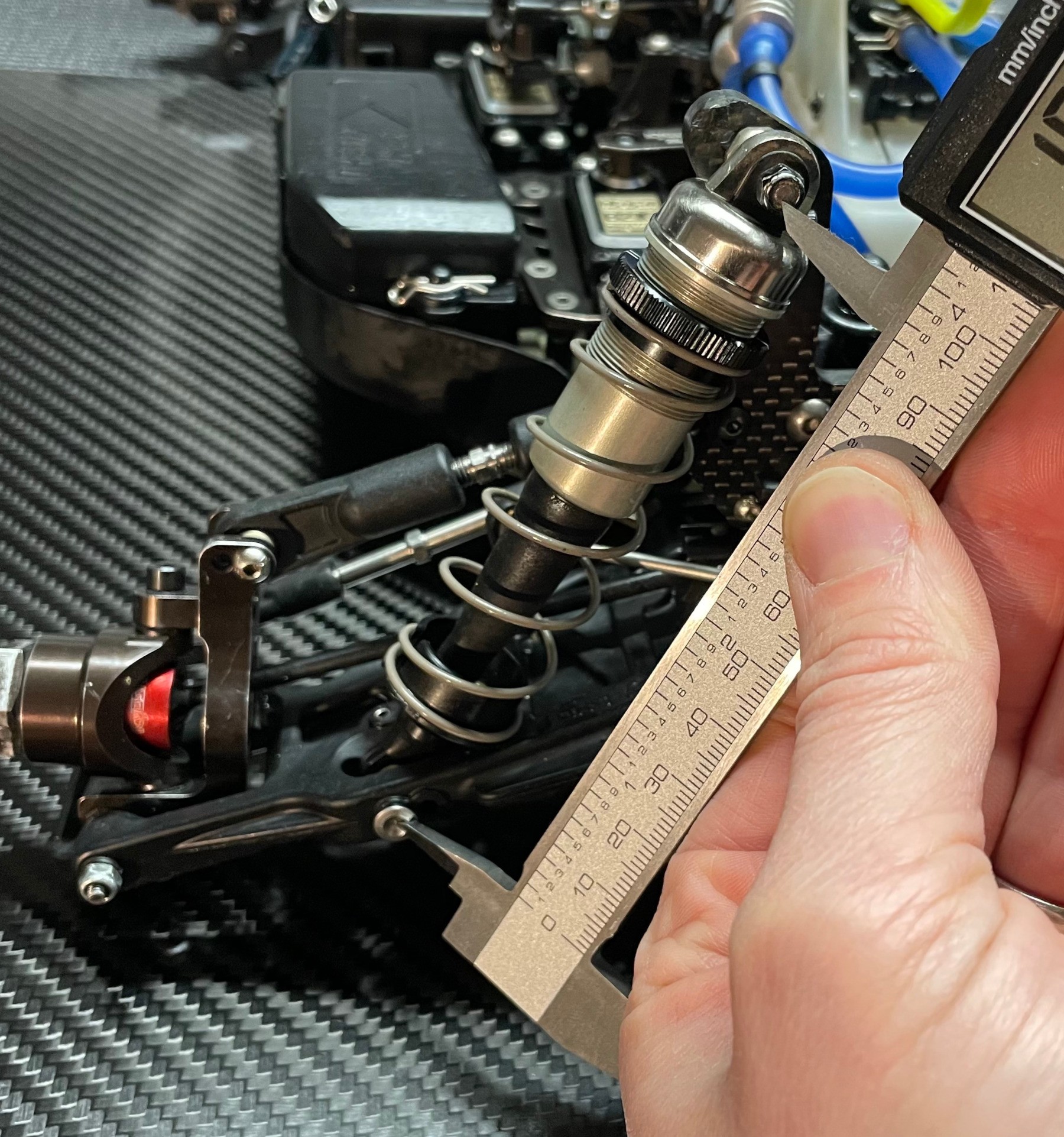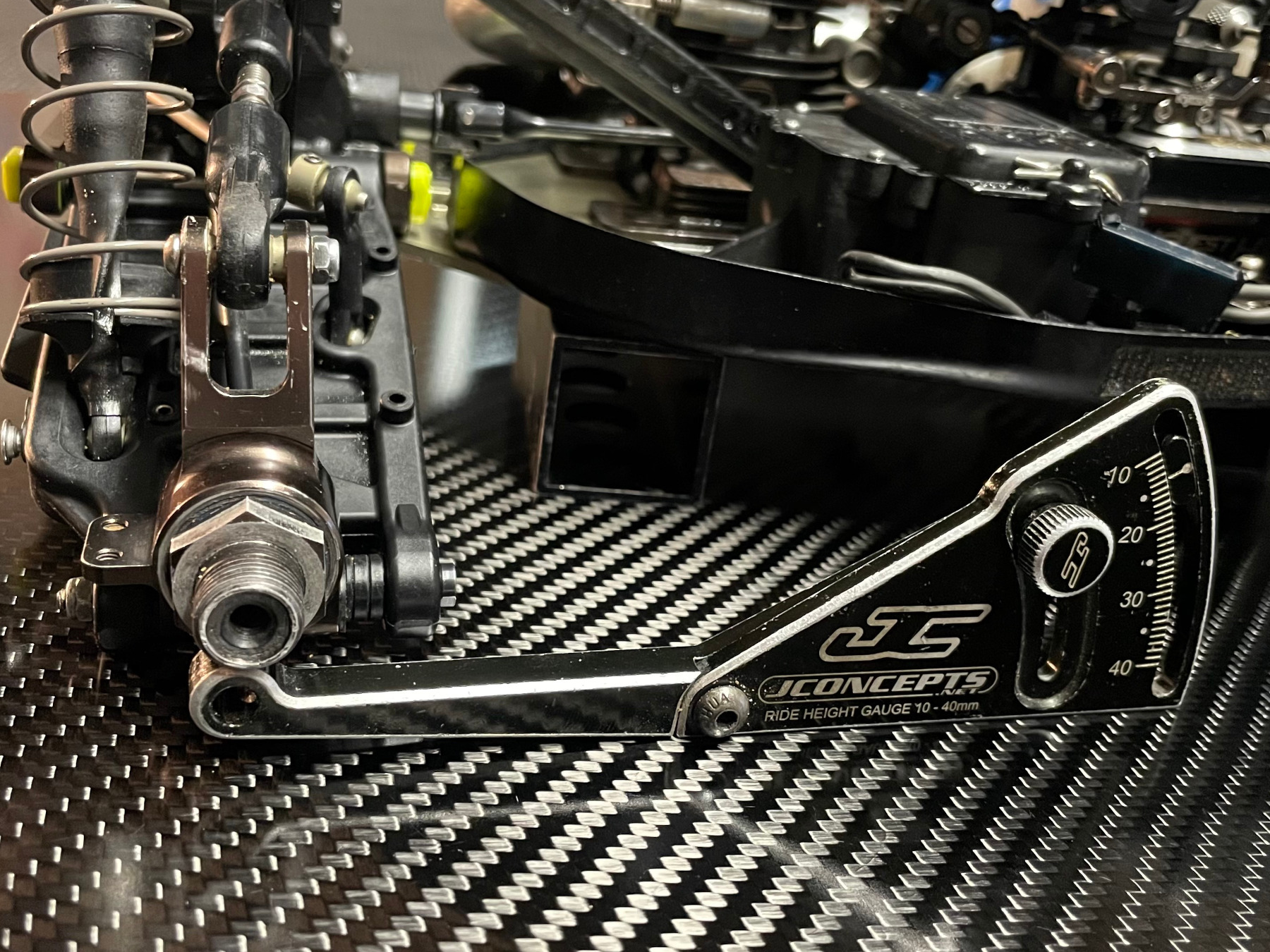Quick tutorial #4: up and down travel, how to adjust it and what does it change?
Quick tutorials are a simple way to understand the settings of your car in a few minutes.
A subject, a short video, in order to answer 2 essential questions: WHY and HOW?
VIDEO
INTRO
We talk about suspension travel, the length of possible travel of your RC car's suspension.
It is separated in 2, with up travel and down travel (droop).
The down travel corresponds to the maximum ground clearance (see also the tutorial on ground clearance) that your chassis may have.
That is to say the maximum lift your car can have before the wheels take off.
We can easily change this setup and we will see it later.
The up travel corresponds to the height of the wheel in relation to the chassis when the shock absorber is fully compressed.
It is generally limited to the geometry of the suspension and the shock absorber, and we don't really need to change it.
HOW TO CHANGE THE SETUP
Down travel (droop)
There are several ways to measure the value of your down travel.
The most used is measuring the length of the shock absorber when the car is placed on a base (usually with the wheels for the force applied to the suspension). We measure the distance between the top and the feet of the shock absorber, with a caliper or a special tool.

This technique is very quick and practical, however it is not very precise, because 0.5mm of difference on the shock absorber length can have a difference of a few millimeters at the wheel.
In addition, this value will also depend on the geometry of the car and the different positions of the shock absorber. Indeed, for a given measured shock length, if you use the inside or outside position on the wishbone, you will not have the same value of travel at the wheel at all.
This is also the case when switching from the MP10 to the MP10 TKI2 for example.
With the new shock mounts and long shocks we can go lower with more angle on the wishbone which is a big plus but for a given travel 102mm up front and 119mm out the rear on the MP10, you will have roughly the same don travel as 105mm/122mm on a TKI2.
We would therefore prefer to use blocks, positioned under the chassis, then measure the value under the axle of the wheel. If you always set a given value, your actual wheel travel will therefore always be the same, regardless of the shock positions used.

In general for a 1/8 off-road buggy, the value is close to 30mm in front (0 with a 30mm block) and 25mm behind (-5 with a 30mm block).
To modify the value of the down travel (droop) you have to adjust the screw which is trapped in the suspension arm and in contact with the chassis plate.
The more you tighten the screw, the more you will reduce the droop and vice versa.
For 1/10 buggies, you must tighten or loosen the shock absorber ball end or insert washers on the rod below the piston (inside the shock absorber). The length of the rod coming out of the shock absorber will be measured before mounting it on the car.
Uptravel
For the up travel, this setting is often fixed by the engineers/developers because it depends on the geometry (length of the shock bodies, positions etc.) and it is not necessary for you to modify it.
However, to measure it, you have to place the car on a flat surface, chassis on the ground, and compress the suspension to the maximum. Then measure the value under the wheel axle.
To reduce this value, it will be necessary to place washers on the shock absorber rod between the body and the yoke outside of it.
WHAT DOES IT CHANGE ON THE TRACK ?
A car with more down travel will have more motion on the track. During acceleration/braking phases, but also left/right. The car will be less responsive and will change course slower.
Your car will therefore be less precise but easier to drive and much more efficient on rough surfaces, with the wheel having more travel to stay in contact with the ground in bumps.
Same, with more droop, the wheel will hit the ground sooner over jumps and the suspension will have more time to absorb the landing. The landing will therefore be smoother.
When accelerating, the car will tend to pitch up more and when braking the rear axle will rise. This can give more roll to the front end and therefore more steering.
On tracks with off-cambers, we will choose a rather limited travel, the car being able to rise too much and lose its corner speed.
For up travel, the effects are pretty much the same.
To summarise:
- flat track and/or high grip, we reduce up and down travels.
- tracks with holes and/or low grip, we increase the up and down travels.
Travel values are really going to depend on the model you are using.
On my MP10 TKI2 the values I use for the front are 107mm in shock length 124mm for the rear.
For an original MP10e, we are rather around 102 mm in front and 118 mm in the back.
Please note that the value of the down travel tends to change often (hits on the chassis, torsion of the suspension, etc.), it is therefore advisable to check these values regularly.
See you soon in a new episode!
The Shark
Reno Savoya
Share this content

By Gleizes maxime 12/10/2024 18:40:00
Bonjour reno Quelles valeurs de base pour le droop avec des blocs 30 mm sur le mp10 tk3. Merci d’avance Maxime
View replies (1) -
By RSRC (account_circle Blog Author) 01/17/2025 18:14:32
Bonjour Je ne connais pas la valeur, il suffit de régler les longueurs d'amortisseurs et ensuite mesurer la valeur du droop avec les blocs pour avoir la base.